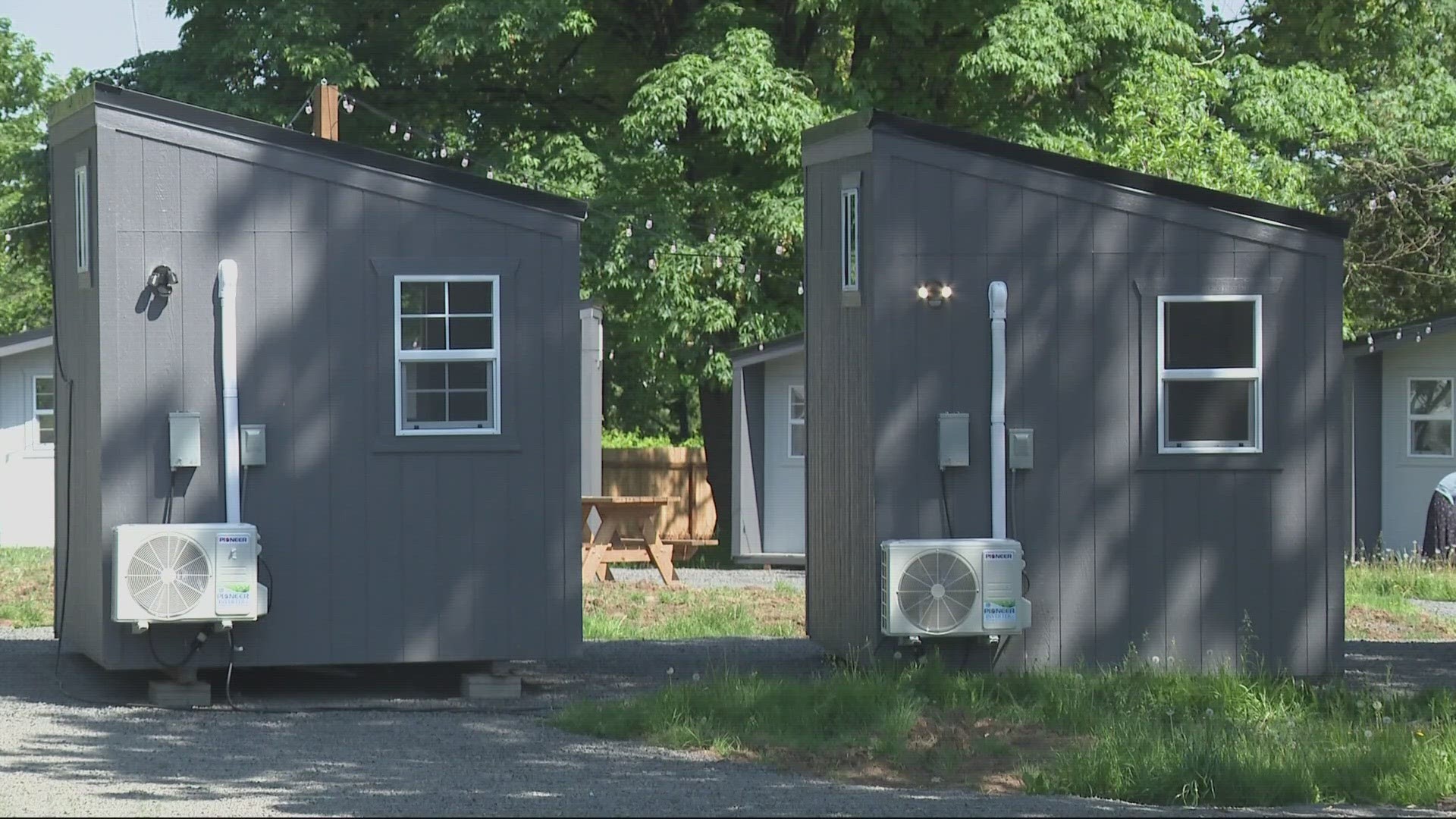PORTLAND, Ore. — It’s been two years since Portland opened its first Safe Rest Village, a concept built around low-barrier tiny homes for homeless people. After a series of lengthy delays, there are now a total of seven villages, reaching to nearly every corner of the city.
Newly released data from the city’s Safe Rest Village team shows they are having some success.
“Going indoors is a really big thing for me,” said Tara Rogers, who moved off the streets and into the Menlo Park Safe Rest Village off Southeast 122nd and Burnside about two months ago. She’s now on her way to permanent housing. “Somebody's actually listening,” Rogers said of those who run the site, like Matthew McCaro with Cultivate Initiatives.
“The trauma of being on the streets and of houselessness and the many barriers that exist for people out there make it so it's not just an overnight fix,” McCaro said.
From July 1, 2022, to June 30, 2023, 345 people stayed in a Safe Rest Village. Of that number, 143 people moved on. 70 went into temporary or permanent housing, and 30 went back into homeless situations, including other shelters. Ten went to jail, treatment or other institutions. There is no data for 33 people — they either didn't complete an exit interview, or they died.
“What it helps us do is look at sort of long-term track records,” said Bryan Aptekar, the city’s Safe Rest Village communications liaison.
He admits that the data is a work in progress.
“We've bundled the data in categories that make sense to us, because there's like 30 or 40 definitions of exiting that one can go to when they leave, and that's overwhelming and very in the weeds … but I realize we've maybe bundled too much, like temporary versus permanent housing,” Aptekar said.
There are also ongoing concerns about site rules, especially regarding drug use.
“People are not required to pass a drug test or be off of substances to come into the village, but there are no possession or use allowed on site,” said McCaro.
RELATED: Peninsula Crossing Safe Rest Village off to 'rocky start,' but neighbors report progress
However, it isn't always the case that residents follow the rules.
“I was in a tiny home, but it wasn't a good place — everywhere you go, fentanyl,” said Steve, who currently lives in a tent off Southeast Powell Boulevard. He says he stayed at the Menlo Park site. “You walk through the village and it's all you can smell."
“Yeah, there has been drug use inside of the village, which are the sort of things that have historically led to exits from the Safe Rest Village,” explained McCaro.
But for people like Rogers, staying at the Menlo Park actually site helped her get clean after years of being addicted to fentanyl and methamphetamines.
“Just being able to lock myself down in a room where there's AC and my dog's OK, and I don't have anybody knocking on my door … it's the person's mentality, that's what need to change,” Rogers explained.
The Safe Rest Village data shows that a typical stay is about 100 days. Staffers told KGW that they try to move people into some other form of housing within six to nine months.
Another Safe Rest Village opened this summer in Northeast Portland, this one specifically for people who live in their vehicles. It is not yet full and follows similar rules as the other sites. KGW plans to check back in on it next week.

